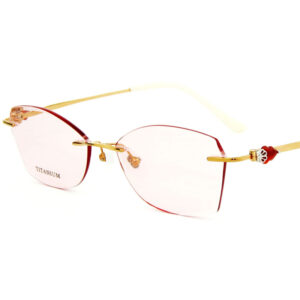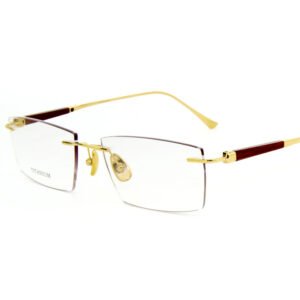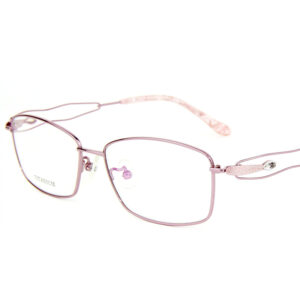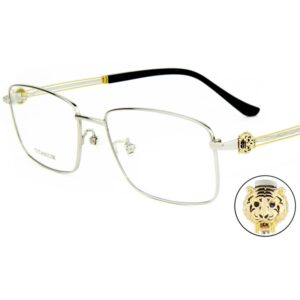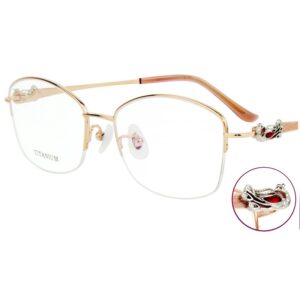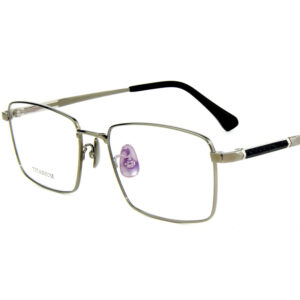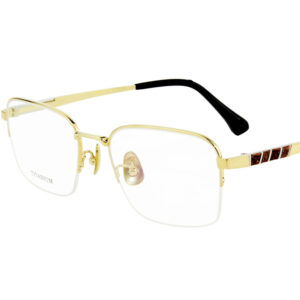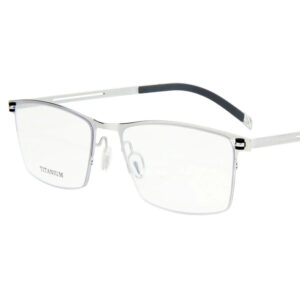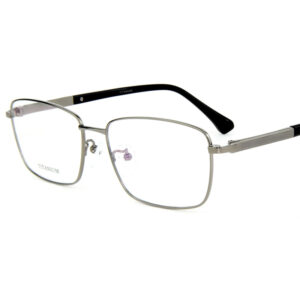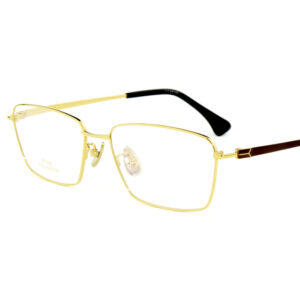Introduction: Craftsmanship in Every Curve
In a world where speed and automation dominate production, handmade acetate eyewear stands as a testament to tradition, skill, and quality. While CNC machines and modern tools aid in shaping raw acetate, it’s the manual steps that elevate a pair of frames from “good” to “exceptional.”
If you’ve ever wondered how much of your acetate glasses are truly handmade, this article is your behind-the-scenes tour. From shaping to polishing, we’ll walk through the key handcrafting stages in acetate frame manufacturing—the touchpoints where human expertise truly matters.
Why Handcrafting Still Matters in Acetate Frame Production
Cellulose acetate remains one of the most revered materials for premium frame design. Derived from natural fibers like cotton and wood pulp, it is known for its rich coloration, structural flexibility, and ability to hold polish and detail. But unlike injection-molded plastics—which can be mass-produced quickly—acetate must be sculpted, shaped, and finished from solid sheets through a combination of mechanical precision and skilled handwork.
This is where handcraftsmanship becomes irreplaceable.
Despite the rise of automated CNC machines and high-speed tumbling systems, handmade steps remain the cornerstone of truly luxurious acetate eyewear. These artisanal touches not only elevate the aesthetics but also enhance the performance and individuality of each frame.
🎯 1. Precision and Detail Where Machines Fall Short
Hand-finishing allows trained artisans to:
- Smooth out micro-imperfections left by machines
- File intricate nose bridges and temple curves with human judgment
- Check alignment and symmetry by eye—an instinct no sensor can replicate
Each step adds to the product’s overall balance, alignment, and finesse—critical factors for eyewear that needs to be both beautiful and wearable.
🖐️ 2. Skin-Friendly Comfort Through Hand Polishing
Automated tumbling is good for bulk smoothing, but only hand polishing can achieve:
- Mirror-finish surfaces that are silky to the touch
- Rounded, gentle edges that reduce skin irritation
- Subtle transitions at hinge points and temple tips
These finishing touches dramatically impact the feel of the frame on the face, offering comfort that’s not just perceived but deeply felt.
🎨 3. Style Customization and Brand Identity
In handmade production:
- Unique laminations and multi-layered acetate patterns can be hand-aligned for effect
- Embossed logos, custom hinge insertions, or color layering are applied manually
- Each frame can carry visual signatures that align with a brand’s identity—no two pieces look exactly the same
This degree of creative freedom is critical for boutique eyewear designers and independent brands who want to stand apart from cookie-cutter factory frames.
⚖️ 4. Balance, Weight & Ergonomics
Mass production often leads to frames that look great on shelves but feel heavy or unbalanced in real-world wear. Hand assembly allows for:
- Subtle adjustments in temple tension and opening resistance
- Equal weight distribution for nose comfort
- Customization of fit, including low-bridge options or altered temple curves for better ergonomics
This ensures that the eyewear doesn’t just look premium—but fits and performs like it too.
Key Handmade Steps in the Acetate Eyewear Making Process
Handmade acetate frames carry a legacy of skilled craftsmanship. From the very first cut to the final polish, each frame is shaped and refined by expert hands. Below, we’ll walk through the nine essential handmade steps that bring acetate eyewear to life.
1. 🧱 Lamination & Block Preparation (Semi-Handmade Foundation)
Before shaping begins, raw acetate sheets—often sourced from top-tier suppliers like Mazzucchelli—must be selected, laminated, and pressed into blocks. This stage sets the tone for the eyewear’s personality.
Why it matters:
- Color blending and pattern alignment (especially in marble, tortoise, or gradient designs) are often done by hand, ensuring consistent visual flow across frames.
- Artisans layer sheets manually to create custom laminations, like stripe effects, dual-tone colorways, or embedded textures.
👉 These laminated blocks become the canvas for the frame’s story—bold, minimal, or organic.
2. ✂️ Manual Sawing or Rough Cutting
Although CNC machines are common in mass production, many small-batch or luxury frame manufacturers still rely on hand-cutting techniques—especially for custom shapes or limited editions.
The process:
- Artisans trace the frame outline directly onto acetate blocks using template guides.
- Using precision saws or grinding wheels, the front and temple pieces are rough-cut by hand.
This ensures maximum material efficiency and gives room for creative, non-standard designs that machines struggle to execute with finesse.
3. 🔍 Drilling & Slotting by Hand
After the initial shaping, detailed functional areas are created manually, allowing for micro-adjustments based on frame geometry and design intent.
Key handcrafted cuts:
- Lens grooves to hold the lenses securely
- Bridge cuts for ergonomic nose fitting
- Rivet and hinge slots, aligned for durability
- Pad arm drillings, if the frame includes adjustable nose pads
Using fine-tipped drills and guided jigs, artisans ensure exact placement. A slightly misaligned hinge hole could compromise the frame’s integrity and balance.
4. 🔩 Metal Core Insertion (Temple Reinforcement)
One of the most delicate and essential handcrafting stages: embedding a metal wire core inside the temple arms.
Why it’s done by hand:
- Acetate is first warmed using hot air or heated water to soften the material.
- The metal rod is then inserted manually, ensuring perfect alignment along the center axis.
- Care is taken to avoid warping, bubbling, or twisting the acetate.
Metal cores improve flexibility, longevity, and grip behind the ear. Skilled technicians must maintain consistent depth and angle across all pairs in a collection.
5. 🔧 Tumbling & Manual Edge Refinement
While the frame enters an automated tumbling machine filled with wooden chips or stones for pre-polishing, it’s only the beginning of the smoothing process.
Next comes precision handwork:
- Sharp corners and inner curves are filed down by hand for comfort.
- The temple tips are gently bent and shaped by artisans to follow the natural curve of the ear.
- Nose bridge and lens grooves are re-checked and refined for symmetry.
Only human hands can feel when a frame is truly smooth and ready for polishing.
6. ✨ Multi-Stage Hand Polishing
Polishing transforms a raw acetate piece into a luxurious, glossy frame—and no machine can fully replace the human touch here.
The polishing process includes:
- Hand sanding with various grades of paper to remove micro-scratches and burrs
- Rotary buffing with wax compounds, applied by hand and layered in stages
- Final cotton wheel buffing, bringing out the acetate’s natural shine
Some brands even offer matte brushing or textural polishing, done fully by hand using steel wool or specialized pads.
👉 Polishing is where handmade frames truly outshine their mass-produced counterparts—both in feel and finish.
7. 🔗 Manual Assembly of Hinges and Temples
Once the parts are polished to perfection, it’s time to put the puzzle together—with care, precision, and hand tools.
Assembly steps:
- Hinges are installed and tightened using small screwdrivers
- Spring hinges, if included, are manually pressed into position
- Temples are aligned and adjusted to open at the correct angle
- The entire frame is tested for balance and resistance
This stage is essential for ergonomics and daily wearability. Poor assembly leads to loose hinges, uneven pressure, and overall discomfort.
8. 🖋 Branding & Decorative Detailing
With the frame assembled, it’s now ready to carry your brand’s identity—a step done entirely by hand to ensure precision and elegance.
Branding techniques include:
- Silk screen printing for color logos
- Hot stamping with gold, silver, or rose foil
- Laser engraving of logos, SKUs, or series names
- Metal logo inlays, placed and sealed by hand
Each branding step is carefully aligned using jigs or by eye to maintain consistency across the batch. The result? A polished, professional, and memorable final product.
9. 🔎 Final Inspection & Hand Cleaning
Before packaging, every handmade acetate frame undergoes a comprehensive quality inspection, carried out by skilled technicians.
Inspection checklist includes:
- Symmetry between left and right sides
- Hinge tension and open/close resistance
- Polish consistency and surface blemishes
- Logo clarity and alignment
- Frame alignment and fit on a standard headform
Once approved, the frames are:
- Manually cleaned with microfiber
- Paired with their designated cloths and cases
- Packed by hand for shipping or retail delivery
👉 This final check is what separates mass-market products from boutique-grade craftsmanship.
🔍 Summary of Handmade Steps
| Stage | Handmade? | Purpose |
|---|---|---|
| Lamination & Sheet Prep | Partial | Color customization, texture alignment |
| Rough Cutting | Yes | Unique shapes and small batch production |
| Drilling & Slotting | Yes | Precision in key placement |
| Metal Core Insertion | Yes | Stability and flexibility |
| Tumbling & Filing | Partial | Shape refinement |
| Polishing | Yes (multi-stage) | Final finish and surface quality |
| Assembly | Yes | Frame balance and hinge function |
| Branding | Yes | Brand identity and quality |
| Final Inspection & Cleaning | Yes | Ready for retail |
🧠 Why Brands Should Care About Handwork
Handmade doesn’t just sound premium—it directly impacts quality, comfort, and uniqueness. Customers today seek:
- Authentic craftsmanship
- Slow-made products
- Designs with human character
For independent eyewear brands, highlighting your use of handcrafted steps creates emotional value—and justifies a higher retail price point.
Conclusion: Handmade = Human-Centered Quality
Handcraftsmanship is not just a nostalgic branding element—it’s a tangible layer of quality, comfort, and story in acetate eyewear. Whether you’re a brand owner seeking better product-market fit, or a designer crafting a signature line, understanding these steps can help you:
Stand out in a saturated marketplace
Design more realistically for hand-finishing
Communicate value to your customers
💼 Want to Build a Handcrafted Acetate Frame Line?
At EyewearBeyond, we support brands around the world in creating bespoke acetate eyewear through our hybrid manufacturing line:
✅ CNC Precision + Hand Finishing
✅ Mazzucchelli & Bio Acetate Options
✅ OEM/ODM Full-Service Support
✅ MOQ Starting at 100 pcs/style
Let’s turn your vision into beautifully handcrafted frames—step by step.



